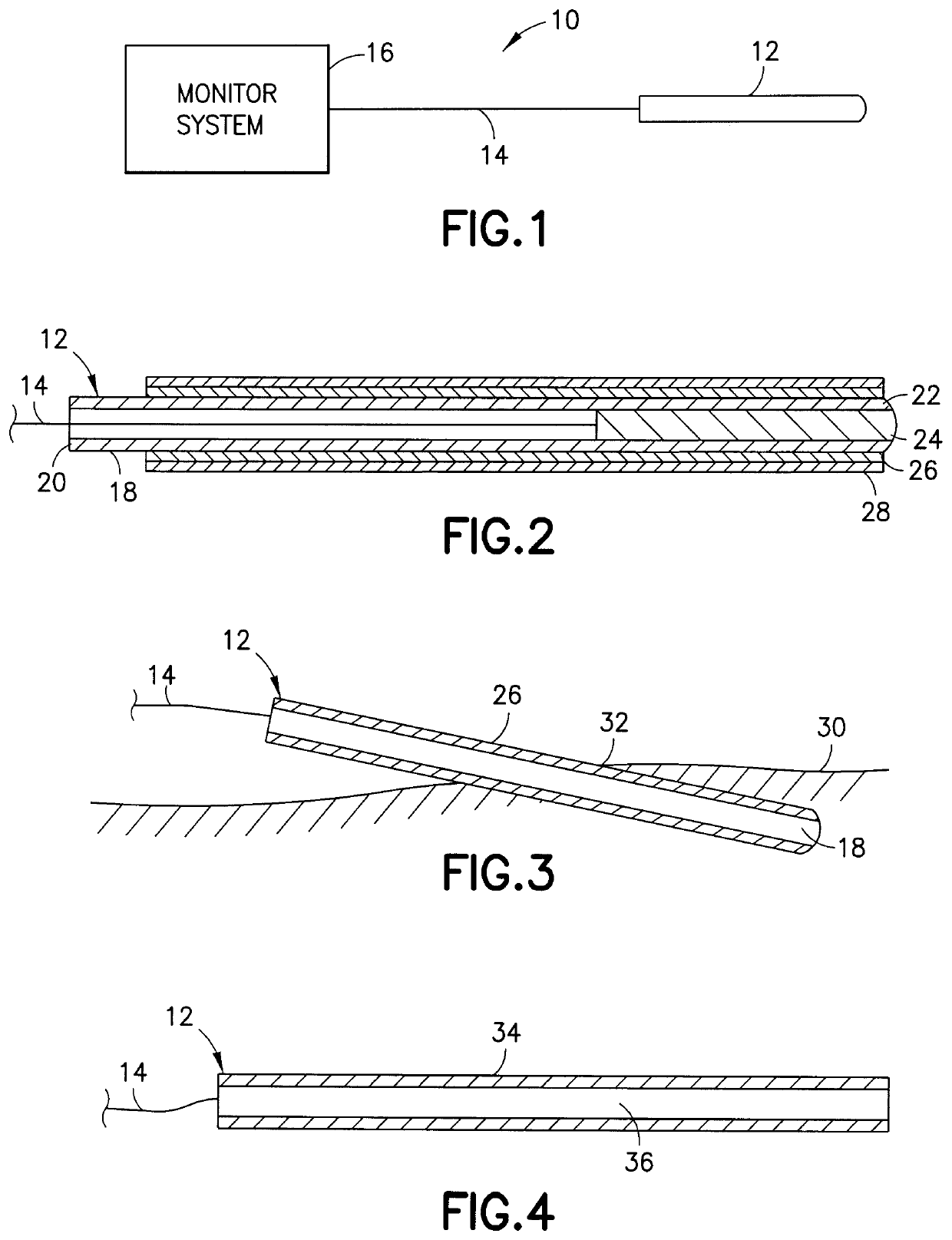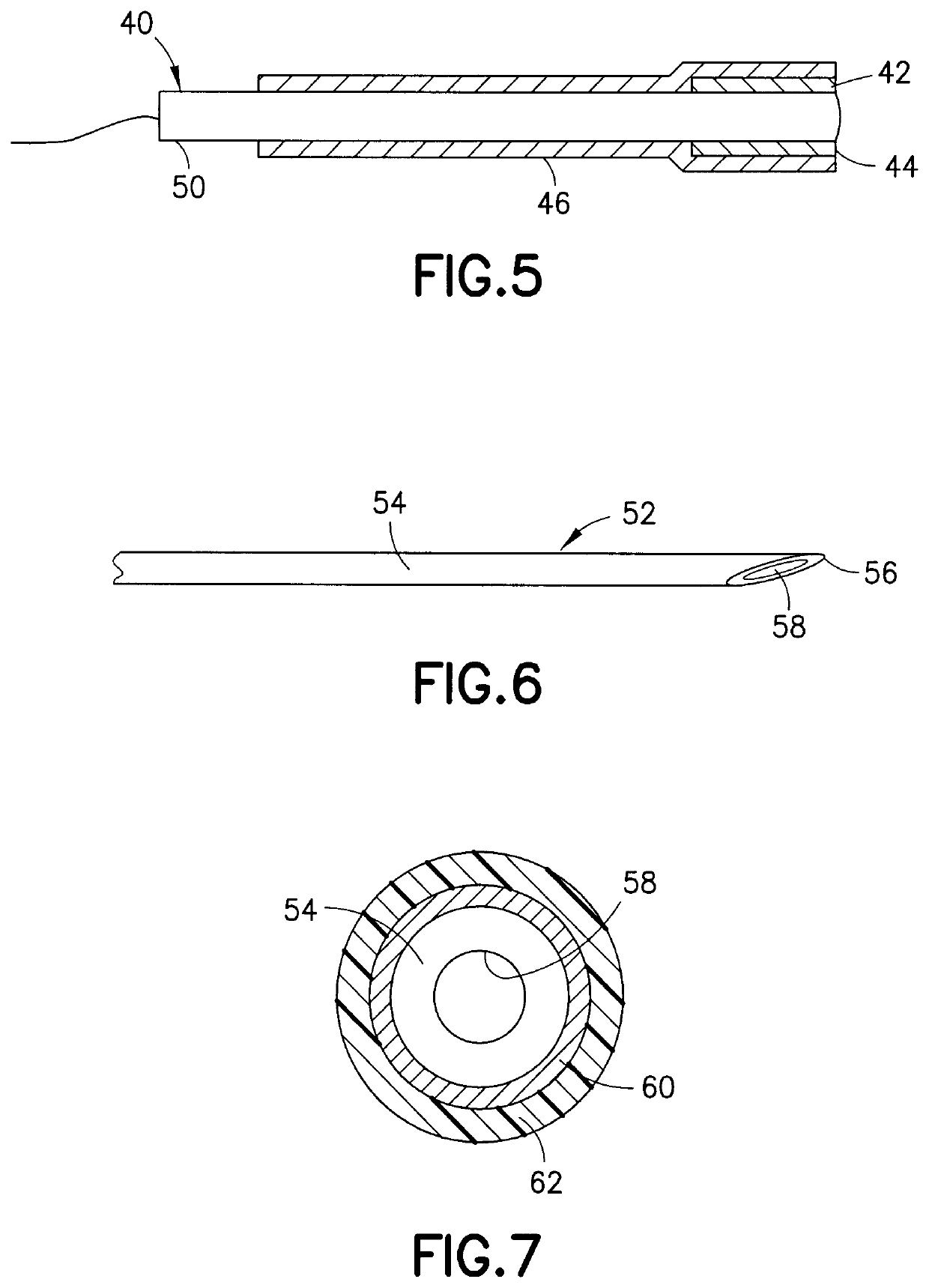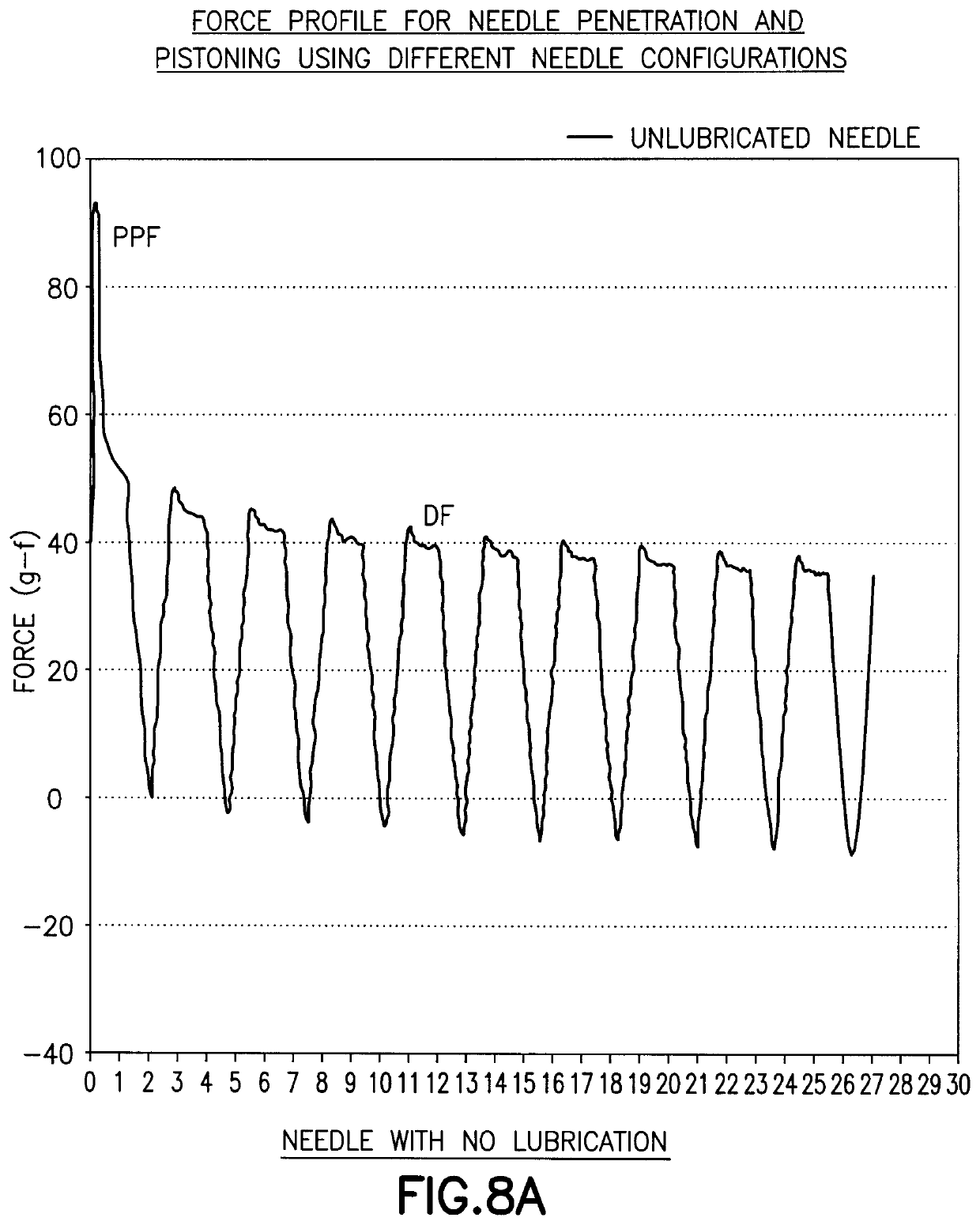Device and method for inhibiting movement of a medical device in a patient
a technology for inhibiting movement and medical devices, which is applied in the field of devices and methods for inhibiting movement of medical devices in patients, can solve the problems of irritation and inflammation at the site of penetration, contribute to the pain perceived by patients, and affect the effect of patient comfor
- Summary
- Abstract
- Description
- Claims
- Application Information
AI Technical Summary
Benefits of technology
Problems solved by technology
Method used
Image
Examples
example 1
[0061]A 31 gauge by 5 mm needle was used to demonstrate the movement and effect of a medical device inserted in the tissue of a patient. In this example, a needle with no lubrication was used. The needle was used to penetrate a proprietary substrate to simulate tissue of a patient. The needle penetrated the substrate once followed by holding the needle in place for a fixed duration. Thereafter, a slight pulling out and pushing in action was applied to the needle. The pulling out and pushing in action occurred over a small fraction of the total insertion depth and at a slow speed compared to the speed of the initial insertion. The movement and speed of the pulling out and pushing in action on the needle was carried out to simulate normal movement of a probe or catheter in the tissue of a patient over an extended period of time. The pulling out and pushing in motion was used in the testing to simulate what is expected to be observed in a real life use such as a body sensor being attac...
example 2
[0063]In this example, a 31 gauge by 5 mm needle was used as in Example 1 which was coated with a crosslinked lubricant composition. The lubricant coated needle was inserted into the substrate. As shown in FIG. 9A and FIG. 9B, the initial peak penetration force is reduced, relative to that shown in FIG. 8A resulting in an easier insertion into the substrate. The drag force is also significantly reduced, relative to that shown in FIG. 8A and FIG. 8B suggesting that the needle is free to move when compared to the drag force of Example 1. The reduced drag force shown in the Figures show the ease at which the needle can move in the substrate as a result of slight changes in movement by a patient simulated by the substrate. The ease of movement of the needle may be detrimental to the performance of a sensor since it might actively promote pistoning. The Figures also show the drag force profile and a stick slip phenomenon that causes the force to vary during the pulling out and pushing in...
example 3
[0064]In this example, a 31 gauge by 5 mm needle was coated with a non-curing lubricant that does not form a crosslinked network and does not bond to the surface of the needle. FIG. 10A and FIG. 10B demonstrates that the lubricant provides a reduced peak penetration force and a drag force compared to an unlubricated needle relative to that shown in FIG. 9A and FIG. 9B. FIGS. 10A and 10B when compared with FIGS. 9A and 9B of Example 2 indicate that the uncrosslinked lubricant has an increased peak penetration force and drag force when compared to the needle coated with a crosslinked lubricant of Example 2. This example proposes an intermediate configuration where the needle pull out and push in movement is not too hindered and not too enabled by the highly lubricious coating of Example 2.
PUM
| Property | Measurement | Unit |
|---|---|---|
| height | aaaaa | aaaaa |
| thickness | aaaaa | aaaaa |
| movement | aaaaa | aaaaa |
Abstract
Description
Claims
Application Information
 Login to View More
Login to View More - R&D
- Intellectual Property
- Life Sciences
- Materials
- Tech Scout
- Unparalleled Data Quality
- Higher Quality Content
- 60% Fewer Hallucinations
Browse by: Latest US Patents, China's latest patents, Technical Efficacy Thesaurus, Application Domain, Technology Topic, Popular Technical Reports.
© 2025 PatSnap. All rights reserved.Legal|Privacy policy|Modern Slavery Act Transparency Statement|Sitemap|About US| Contact US: help@patsnap.com



